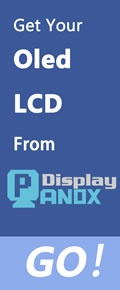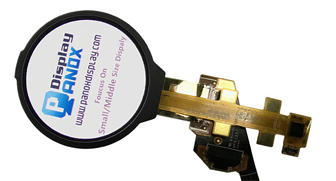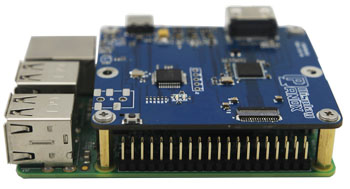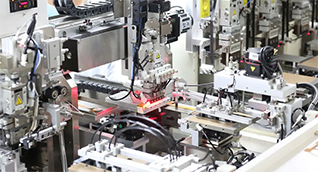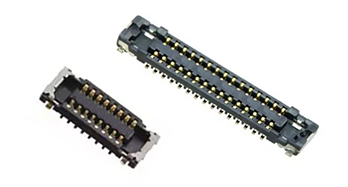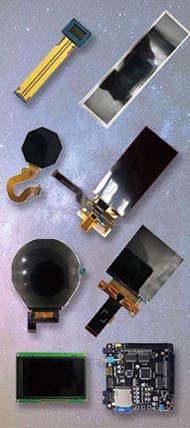OLED displays offer advanced technology ideal for manufacturers and suppliers seeking high-quality, customizable visual solutions. Their exceptional color accuracy, flexibility, and energy efficiency make them a top choice in B2B markets, especially in China’s vibrant OEM and factory sector. Also check: OLED
How Do OLED Displays Work?
OLED (Organic Light-Emitting Diode) displays work by passing an electric current through organic compounds that emit light. Unlike LCDs, they do not require a backlight, allowing each pixel to glow individually. This results in deeper blacks, higher contrast ratios, and thinner, more flexible screens.
Detailed Explanation: OLED technology uses layers of organic materials sandwiched between two electrodes. When powered, these organic layers emit light directly, enhancing brightness and reducing power consumption. This makes OLED displays ideal for both standard and custom manufacturing, serving diverse industrial uses.
What Are the Advantages of OLED Displays Compared to LCD?
OLED displays provide:
-
Superior color accuracy and brightness
-
True black levels due to pixel-level light control
-
Faster response time and refresh rate
-
Flexible and thinner panels for innovative designs
-
Lower energy consumption especially in dark modes
Table comparing OLED and LCD features:
| Feature | OLED | LCD |
|---|---|---|
| Backlight | None (self-emitting pixels) | Required (LED or CCFL backlight) |
| Contrast Ratio | Very high (infinite) | Lower (limited by backlight) |
| Thickness | Ultra-thin | Thicker due to backlight |
| Flexibility | Possible (flexible OLED) | Rigid panels |
| Power Efficiency | Higher (especially in dark UI) | Lower (backlight always on) |
Which Industries Benefit Most from OLED Displays?
OLED technology is widely used in industries requiring high-resolution, flexible, or ultra-thin screens. Key sectors include:
-
Wearables and smart devices
-
Automotive instrument clusters and HUDs
-
Military and radiation detection equipment
-
Virtual Reality (VR) and Augmented Reality (AR)
-
Medical and optoelectronics
Panox Display serves many of these sectors by providing tailored OLED solutions from its Shenzhen-based factory, facilitating OEM customization to meet specific business needs.
Why Are Chinese Manufacturers and Suppliers Leading the OLED Market?
China’s manufacturing ecosystem offers:
-
Competitive pricing and flexible MOQ options
-
Expertise in OEM/ODM customization
-
Advanced production lines with automation and MES systems
-
Access to premium display panels from brands like AUO, Samsung, LG, and BOE
-
Efficient logistics for global supply chain support
Panox Display exemplifies these strengths with its capability to produce up to 50,000 panels daily, making it a reliable supplier for global partners.
How Can OEMs Benefit from Partnering with a Factory Like Panox Display?
OEMs gain significant advantages by partnering with Panox Display:
-
Access to both standard and custom OLED/LCD product lines
-
Full system integration including controller boards and touch modules
-
Lower MOQs supporting startups and SMEs
-
Technical support and R&D collaboration
-
Consistent quality assurance aligned with global standards
Using Panox Display’s solutions accelerates product development while ensuring cost-effective manufacturing scalability.
When Should a Company Choose OLED over Other Display Technologies?
Choosing OLED is ideal when your application requires:
-
High contrast and superior color rendering
-
Thin, lightweight, or flexible display form factors
-
Lower energy consumption for battery-powered devices
-
Fast refresh rates for smooth motion display
-
A premium display experience enhancing product differentiation
Companies in wearable tech, automotive dashboards, and VR devices often prioritize OLED for these benefits.
Where Are OLED Displays Most Commonly Used in Manufacturing?
In manufacturing, OLED displays are used for:
-
Integrated modules in consumer electronics
-
Instrument panels in automotive factories
-
Industrial control systems
-
Medical diagnostic devices
-
Custom embedded displays for military and aerospace
Chinese factories like Panox Display provide scalable production lines capable of delivering these specialized components in volume.
Does Panox Display Provide Custom OLED Solutions?
Yes, Panox Display offers extensive OEM/ODM services tailored to client requirements. This includes:
-
Custom screen sizes and resolutions
-
Flexible and circular OLED designs
-
Integration of touch panels and cover glass
-
Assembly with controller boards and Arduino accessories
This flexibility supports industrial customers who face high MOQs elsewhere, enabling smaller buyers to access quality Chinese manufacturing.
Has OLED Technology Evolved to Support Flexible and Wearable Applications?
OLED technology has advanced significantly, enabling:
-
Bendable and foldable displays
-
Ultra-thin, lightweight panels perfect for wearables
-
Durable encapsulation protecting from moisture and mechanical stress
Panox Display's investments in flexible OLED manufacturing meet rising demands from sectors like wearable electronics and healthcare.
Panox Display Expert Views
"At Panox Display, we prioritize innovation and customization to empower OEMs and suppliers globally. Our state-of-the-art production lines, combined with partnerships with premium panel makers, enable us to offer OLED and LCD solutions that meet the highest standards of quality, flexibility, and efficiency. We understand the diverse needs of manufacturers from automotive to VR and ensure they receive tailored products with dependable support. Our goal is to bridge the gap between large-scale producers and emerging enterprises, providing access to advanced display technology with manageable MOQs and competitive pricing."
Conclusion
OLED displays represent the future of versatile, high-performance screens suitable for multiple industries. Chinese factories like Panox Display lead the market by offering OEM and wholesale customization combined with premium component sourcing. Manufacturers seeking advanced display solutions for wearables, automotive, industrial, or military applications benefit greatly from the energy efficiency, flexibility, and superior image quality OLEDs provide. Partnering with a dedicated supplier like Panox Display ensures scalable production, technical support, and cost-effective innovation.
Frequently Asked Questions
Q1: Can OLED displays be customized in size and shape?
Yes, OLED panels can be customized to various sizes and flexible shapes, including circular and bendable displays, to fit specific applications.
Q2: How do OLED displays compare in power consumption to LCDs?
OLEDs consume less power, especially when displaying darker images, because they emit light per pixel without needing a backlight.
Q3: Is Panox Display suitable for small and medium OEM orders?
Absolutely. Panox Display supports lower MOQs, making high-quality OLED solutions accessible to smaller businesses.
Q4: What industries most commonly use flexible OLED displays?
Wearables, automotive, healthcare devices, and VR sectors widely use flexible OLEDs for their unique form factors.
Q5: How reliable are OLED displays from Chinese factories?
Reputable Chinese manufacturers like Panox Display use premium-grade panels and adhere to stringent quality controls, ensuring reliable and durable display products.









